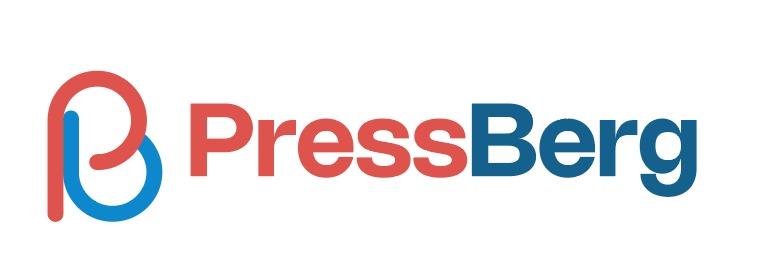Writing is the sketch of your thoughts in words. When someone writes a blog, he does it to share his thoughts and ideas with the people around him. Each day, over 2 million blog posts are being published globally from countless websites.
But it’s never possible for search engines like Google, Bing, and Yahoo to rank them all on the first page. They have developed a specific set of algorithms to rank and promote the best of them.
Whenever we talk about content ranking, it usually means ranking in Google, because it is the most influential search engine on the earth. Unless you optimize your content with the algorithm, Google will never reach to readers.
So how will you optimize your content with the search engine algorithm? Over the years, through research and experiments, we have discovered some proven tactics and strategies on how to write content that ranks on Google.
Let’s be with us to get the tactics and strategies in your knowledge board.
Step 01. Keyword Researching
Still, Google and other search engines use keywords to gauge the insight of your content. It helps the Google search machine to understand what your content is all about.
So you must research yourself to find out the heavy-duty keywords that can generate a good number of traffic to your website. There are several issues you must consider in keyword research: search volume, search intent, and CPC rate.
If it is a new website, you must look for keywords having high search intent, medium search volume and less CPC rate. Because going with the heavily competitive keywords will put your content and website in high competition.
Usually, newly launched blogs and websites cannot gain much benefit from the heavily competitive keyword-optimized content. Therefore, it’s our proven tactic, to go with the above suggestion if you are a newbie to web content writing.
Step 02. Keyword Frequency

Most newbie writers believe high keyword frequency helps web content to gain a good ranking in the search engine. Though the approach had technical usage around ten years ago, it is almost void today.
Google loves to index the contents in its search engine that have a natural tone. It means your keywords must be optimized maintaining a natural flow of language. Remember 1%-2% keyword frequency is enough to optimize with Google.
Step 03. Submit Sitemap
It is a file or blueprint of a website that includes information about the pages, videos, and other existing files in the website and the relationship between them. To achieve good search rankings, you must make sure Google can find your content.
Following the sitemap, Google can easily crawl and index all the contents of your website on a priority basis so that readers can find out their expected pieces.
Step 04. Search Intent
Google has been spending millions of dollars to develop the search intent feature. It refers to the purpose of working behind any online search.
For example, if a Google user searches for ‘Pizza’ and the search result page shows other dishes and recipes, obviously the user will do something else or go for a new search without clicking on any of them.
There are basically four types of search intents: informational, preferential, transactional, and navigational. Follow the content that suits best your content.
Step 05. Create a Meaningful Title Tag

Usually, most people just skim the online content. Rarely do they go word for word. Therefore the header/title tag is a great way to show the structure of your content.
Like the focus and LSI keywords, the title tag also helps Google understand what the page is about and display it on the search results. Now come to the point that makes a good title tag. It must be short, precise, meaningful, and unique, and include the focus keyword.
Step 06. LSI Keywords
It is an SEO term. LSI keyword refers to the associated terms linked to the focus keyword. Using LSI keywords makes it easy for Google and other search engines to better understand the gist of your content.
Suppose, whenever someone decides to write a blog on ‘eCommerce payment system’, some related terms automatically come to mind, like payment gateway, transaction, product cart, checkout, return and refund, payment security, and so on.
The more an article uses all these terms in a natural flow of language, the more Google will index and rank the content on top.
Step 07. Slug Writing
It refers to the URL of your website. Similar to the title tag, keep it short and simple including the focus keyword. Don’t make it too long by stuffing too many LSI or other keywords.
You cannot change your slug regularly. Once your URL is used for internal and external links, you cannot change it. Because it will create broken links both on and off pages.
Step 08. Compelling Meta Description

The meta description refers to a short paragraph that appears underneath the website on the search engine result page. It doesn’t appear on the page. Google will use it as a featured snippet if it gets matched up to the user’s query.
Like the title tag, it must be short and precise too, not exceeding a length of more than 160 characters. Meta tag also helps to increase the CTR of a website. Therefore, for the best search results, you have to write a unique, compelling Meta description for each page on your site.
Step 09. Add Links
Importing the appropriate types of links is one of the best ways to improve the ranking of a website on the Google search engine. Include both internal and external links to your website and ensure it is not increasing the bounce rate.
To do this, make sure the anchor texts are descriptive so that readers can have a complete understanding of the anchored texts on your web pages. While adding external links, make sure the websites have good domain scores.
Step 10. Mobile Friendliness
More than 50% of web traffic is usually generated from mobile users. Therefore, unless you optimize the website for the mobile device, you will fall backward in the race.
Today, it is not a difficult job to make a mobile-friendly website. ThemeForest and WordPress.org will provide you with countless themes the mobile-friendly features. Just make sure the theme goes with your web content.
Step 11. Page Loading Speed

Almost 50% of users move up when page loading takes more than five seconds. It has become an important factor in ranking a website. Higher page loading speed refers to the high bounce rate.
Therefore, it is better to use light photos, images, and gifs on your website. Rather than uploading any full video, better you link it from another domain. Besides, there are many resources available online to help the web owners to reduce the page loading times.
Step 12. Proof-Reading and Editing
Before uploading content, your last job is proofreading the content. It is not only for scanning the grammatical mistakes, but also it will help to make the writing more engaging.
Some experts suggest proofreading the content one or two days later from the day you have finished it. Because the new day will give you a whole new perspective to see the content and see the unnecessary writing you did yesterday.
Step 13. Editing
Erase all the unnecessary writing you did on it. Never think readers will read to the end and find interest in your twists. Just be precise and focus more on information.
Try to deliver all the valuable information as early as possible. Because less than 10% of readers read out each sentence of a blog. Import some lightweight attractive photos and infographic images to make the writing less boring.
Summary
The search engine algorithm is really a mysterious puzzle. What is working today may not be the same for tomorrow. Therefore, web and blog writers have to follow their updates regularly.
These are some of the common strategies that have been observed over the years and found to be generating good results. Using the framework, you can bring a substantial impact on your website.
